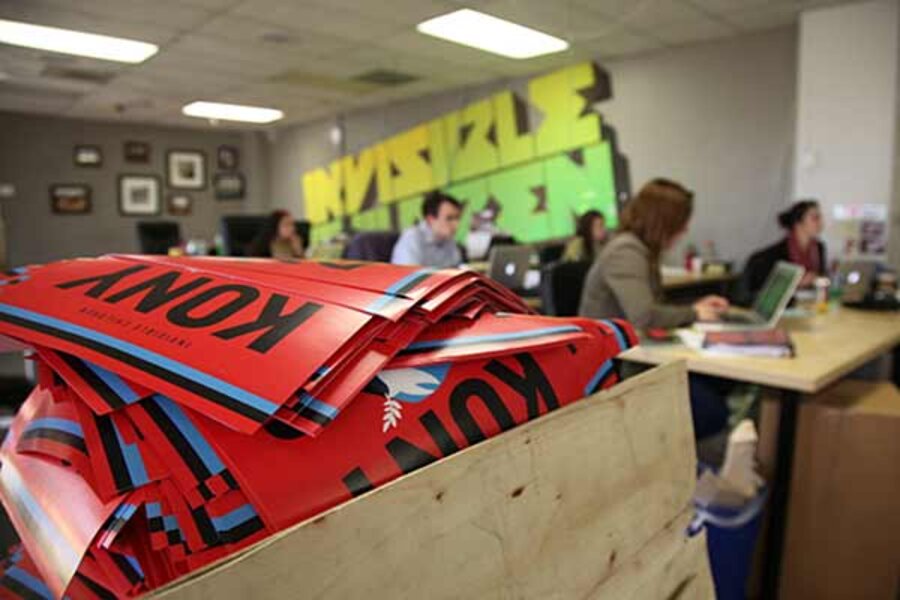Invisible Children responds to critics of Joseph Kony 2012 campaign
Loading...
The campaign to stop Joseph Kony has responded to criticism and renewed its call to arrest the Ugandan militia leader who has murdered tens of thousands, displaced more than 1 million, and conscripted at least 30,000 child soldiers by force.
In a video released on the Invisible Children website, chief executive Ben Keesey laid out his group’s finances, showing that more than 80 percent of funding was spent on program costs out in the field, and emphasized that most funds were spent through partner organizations on the ground in the communities of northern Uganda and the northeastern section of the Democratic Republic of Congo. He also said that the group, which has launched the most viral YouTube video campaign in history, is dedicated to bringing warlord Joseph Kony to justice.
"I understand why a lot of people are wondering, 'Is this just some slick, kind of fly-by-night, slacktivist thing?' when actually it's not at all," said Mr. Keesey in Invisible Children’s response video. "It's connected to a really deep, thoughtful, very intentional and strategic campaign."
What is striking about Invisible Children’s video campaign, and the often harsh response to it, is the yawning chasm between two groups of people who essentially share the same values and want the same thing.
On one side is Invisible Children, a group that began raising funds a decade ago to help affected communities acquire radio equipment and schools to heal the wounds of war and to protect themselves from future attacks. On the other side are African intellectuals and international aid workers who feel that Invisible Children is dangerously simplifying a complex problem in order to raise money.
Both sides want the communities of Uganda, Central African Republic, South Sudan, and the Democratic Republic of Congo to be free of Kony’s murderous militia, the Lord's Resistance Army (LRA). But they have different perspectives on how this should be done, and who should do it.
For critics of Invisible Children, its video highlighting the victims of Kony’s campaign, and then the mainly American students and activists pledging to help out only ends up reinforcing the stereotyped vision of Africa as a weak, damaged continent that needs foreigners to set things straight.
Typical among the critics is Ugandan journalist and blogger Rosebell Kagumire of Kampala, the Ugandan capital, who notes that the story portrayed in the Invisible Children video is about five years out of date.
“My major problem with this video is that it simplifies the problems of millions of people of northern Uganda and makes out another thing that is often heard about Africa, how hopeless people are in terms of conflict,” she says. “It’s not entirely true, there are many local initiatives to end this war…. The war is much more complex than one man called Joseph Kony. It was much more in the beginning about resources and the marginalization of people.”
“This is another video where we see an outsider trying to be a hero rescuing African children,” she adds. “We have seen these stories a lot in Ethiopia, celebrities coming in Somalia. It does not end the problem. I think we need a kind of sound intelligent campaign that are geared to real policy shifts, rather than adverse sensationalized stories that lead one person to cry.”
In his response video, Keesey does make a careful attempt to correct some of the mistakes of the past, pointing out Invisible Children’s African partners on the ground, and recognizing that conditions have improved in northern Uganda as Kony’s group has shifted into the borderlands of Congo, Sudan, and the Central African Republic.
But if this was all just one huge misunderstanding, it is a misunderstanding that is likely to persist long after YouTube viewers have shifted their attention to the next sensation, such as, perhaps, these videos of lions of the Masai Mara captured on remote controlled robot-cam.
Africans are increasingly connected to broadband Internet. They have increasing resources as their economies boom, and they are taking on more and more of the peacekeeping and conflict-resolution responsibilities in hotspots such as Somalia and Sudan. The Invisible Children video campaign – unintentionally, I believe – was a little too close to the old-style Western aid campaigns like “We are the world,” when American and British rock stars urged people to dig deep in their pockets to end hunger in the Horn of Africa nearly 30 years ago. Western generosity and guilt may have worked in 1983, but they just aren’t going to work for a proudly African audience in 2012.
Do Africans want American teens to go back to the days when they didn’t know about or care about Africa? Do they want Americans to remain unengaged? Hardly. But now that Invisible Children has gotten millions of young Americans engaged, it’s time to study the subject a little more, to assist those who are already working to solve the problems. The people of Uganda, DRC, Central African Republic, and Sudan are happy to have the help of equal partners, not conquering heroes.
* Keep Calm, a winking reference to the World War II slogan "Keep Calm and Carry On," is a new blog that aims to provide a bit of context to help make sense of confusing news events.
Get daily or weekly updates from CSMonitor.com delivered to your inbox. Sign up today.







